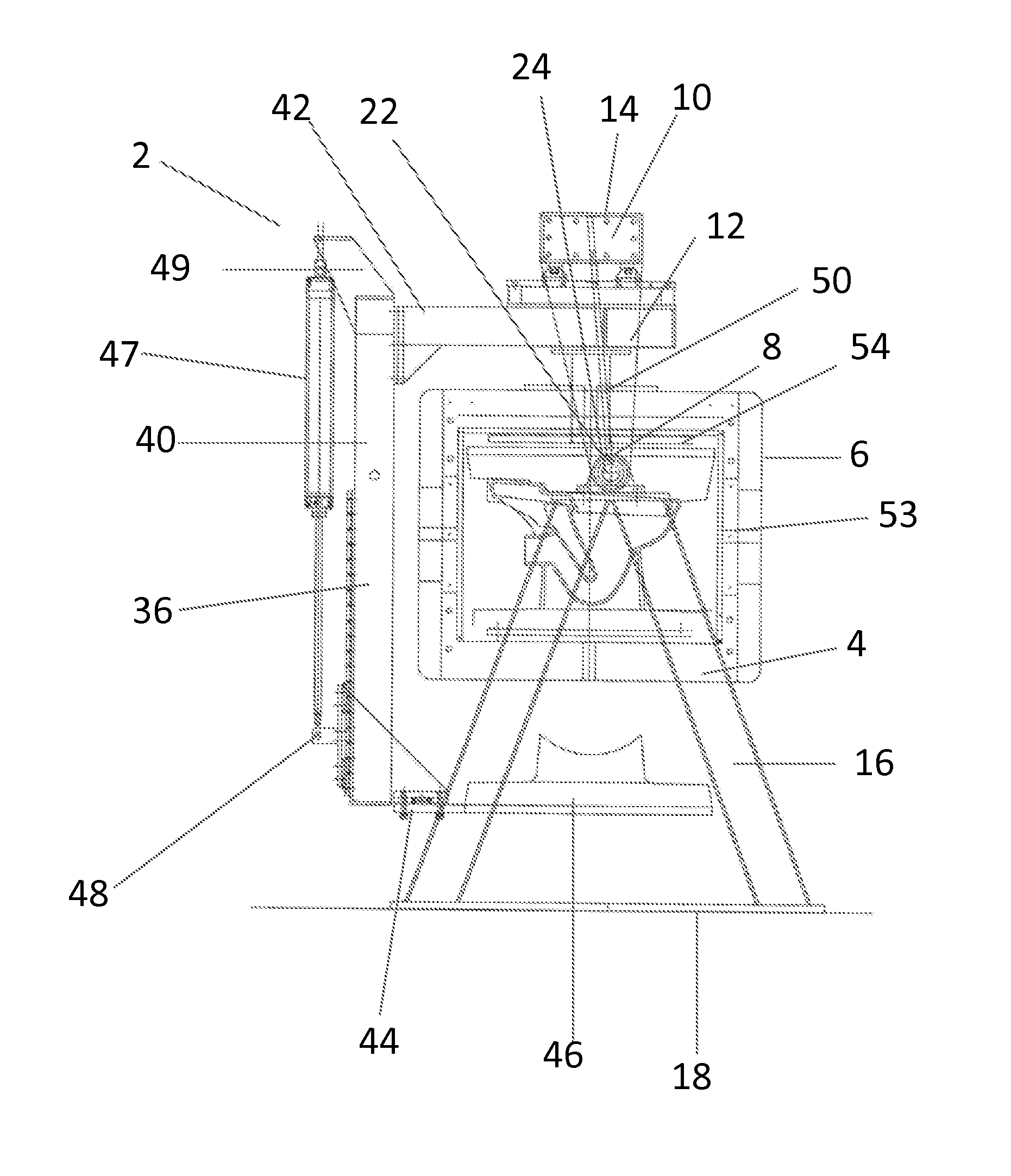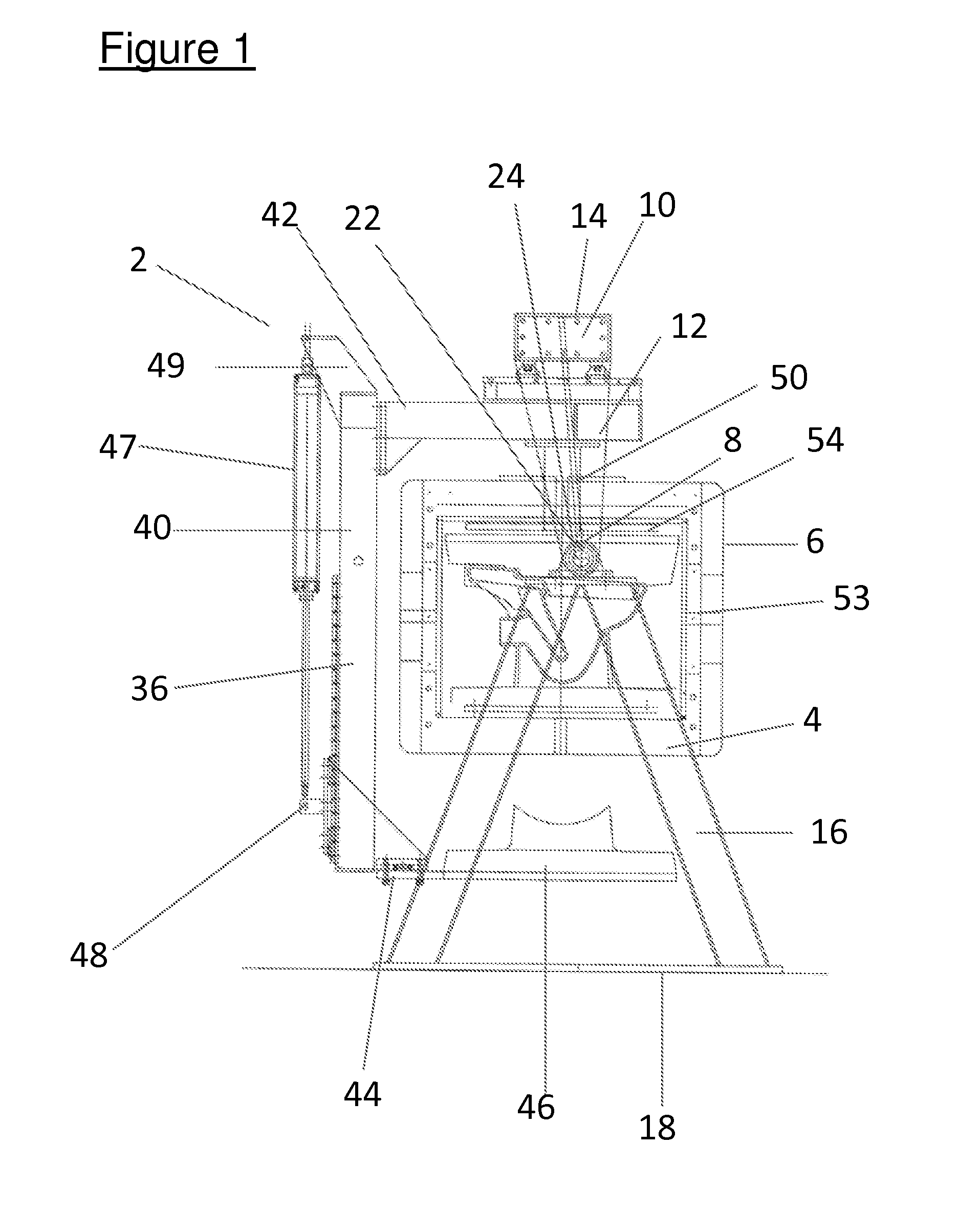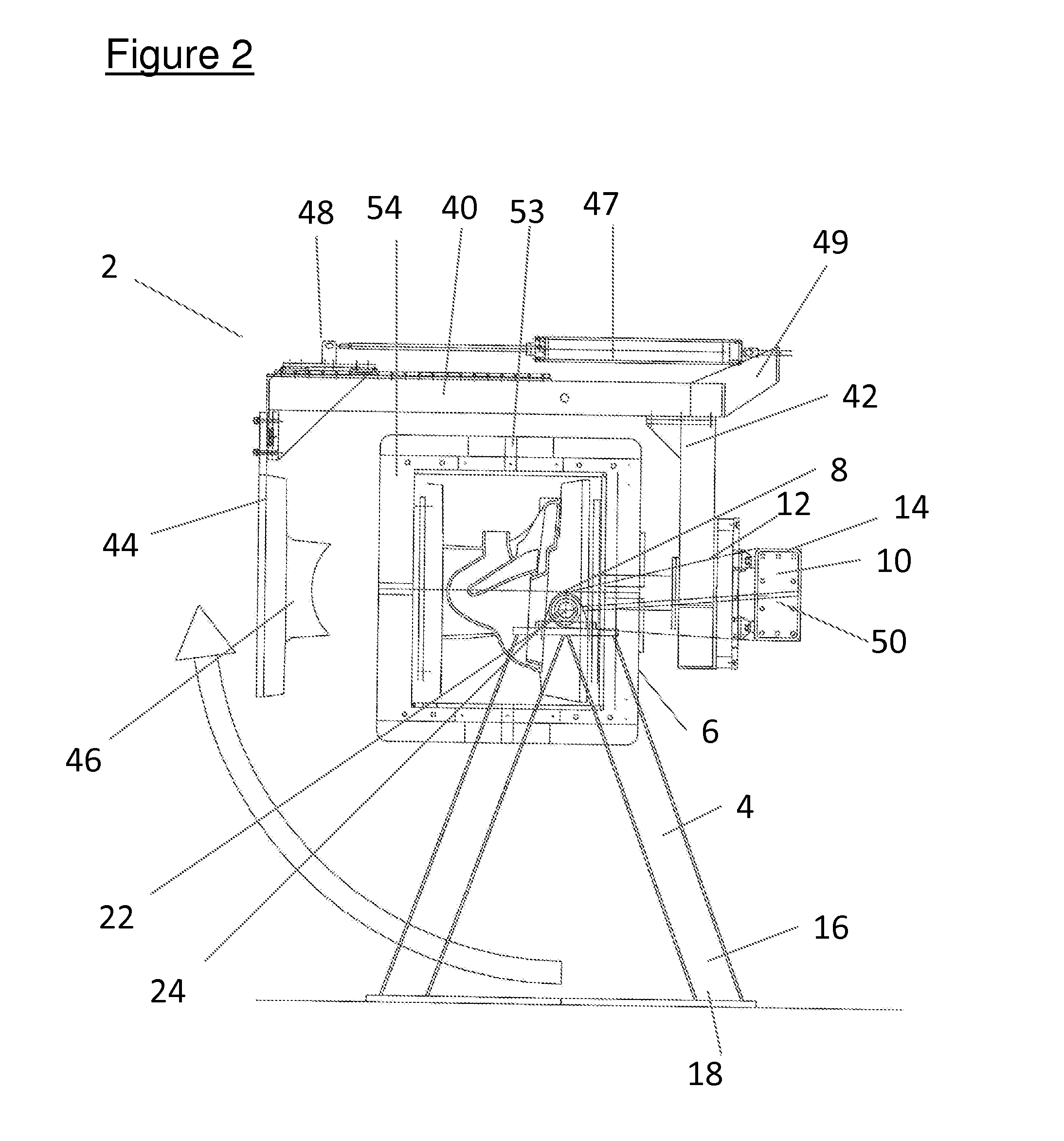Pressure casting apparatus and method
a technology of pressure casting and pressure casting, applied in the direction of slip casting moulds, ceramic shaping apparatus, manufacturing tools, etc., can solve the problems of compromising durability, compromising durability, and pressure casting machines that have not traditionally been equipped, so as to facilitate tighter and more even drainage, simplify and encourage demoulding, and improve the effect of flexibility
- Summary
- Abstract
- Description
- Claims
- Application Information
AI Technical Summary
Benefits of technology
Problems solved by technology
Method used
Image
Examples
Embodiment Construction
[0047]At FIG. 1, there is shown a machine, indicated generally at 2. The machine 2 comprises a support 4, a casting cell 6 and means by which the casting cell 6 can swing, pivot, tilt or rotate about the support 4, which in this case is a pivot 8, which is advantageously simple, but could be a multipart joint, a track or path or a known means by which a first part can swing, pivot, tilt or rotate relative to a second part—all of which will subsequently be referred to using the shorthand term “rotating”.
[0048]The machine 2 has particular and immediate application to the production of toilet bowls and as such will be discussed in relation to them, but has general application to all spheres in which pressure casting is utilised, including particularly sanitaryware, tableware and the technical ceramics industries. The machine 2 is composed of known materials, such as metals, alloys and plastics.
[0049]The machine 2 allows for rotation relative to one axis only, but it is possible—and wit...
PUM
| Property | Measurement | Unit |
|---|---|---|
| relative movement | aaaaa | aaaaa |
| length of time | aaaaa | aaaaa |
| angle | aaaaa | aaaaa |
Abstract
Description
Claims
Application Information
 Login to View More
Login to View More - R&D
- Intellectual Property
- Life Sciences
- Materials
- Tech Scout
- Unparalleled Data Quality
- Higher Quality Content
- 60% Fewer Hallucinations
Browse by: Latest US Patents, China's latest patents, Technical Efficacy Thesaurus, Application Domain, Technology Topic, Popular Technical Reports.
© 2025 PatSnap. All rights reserved.Legal|Privacy policy|Modern Slavery Act Transparency Statement|Sitemap|About US| Contact US: help@patsnap.com



